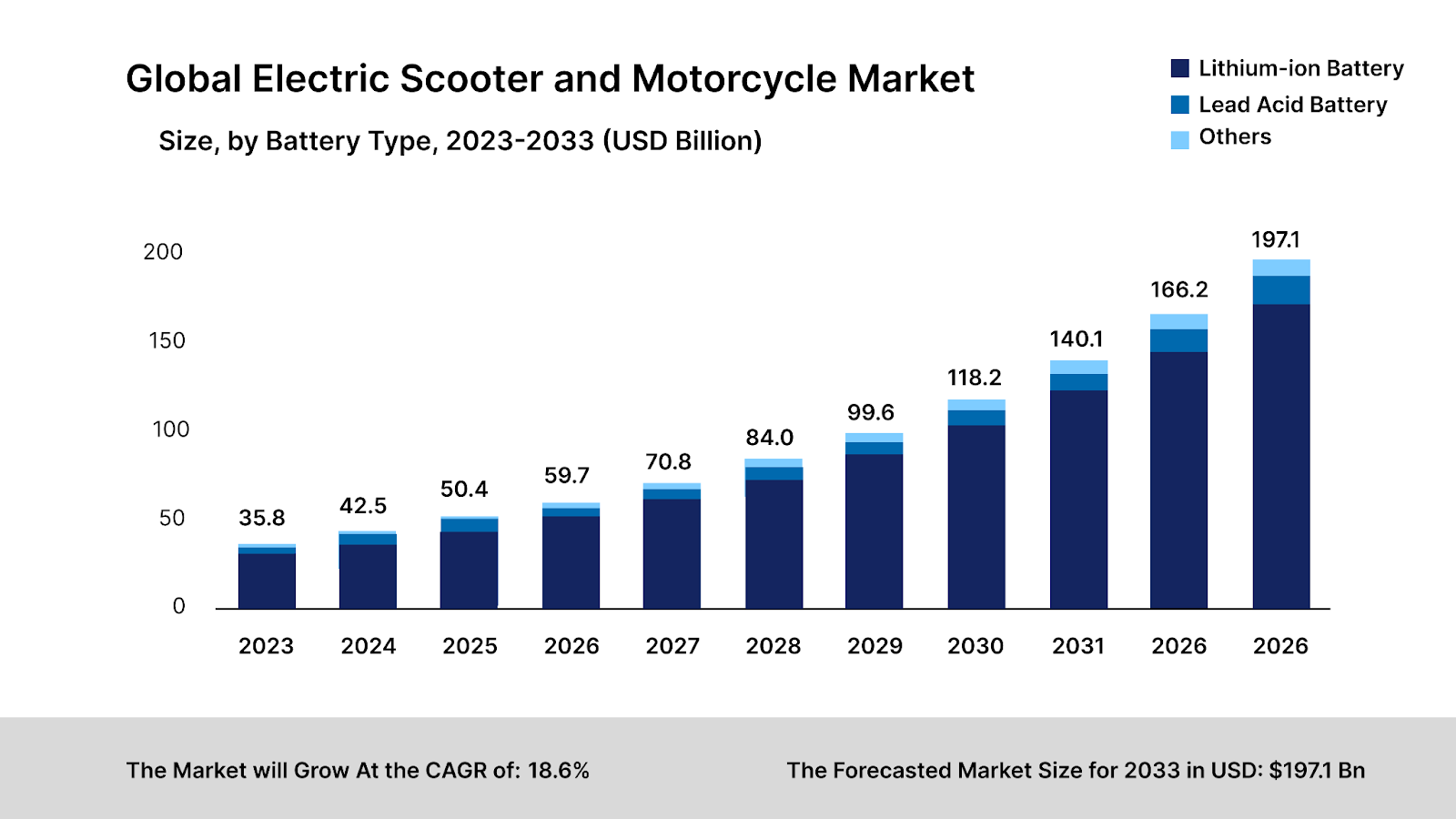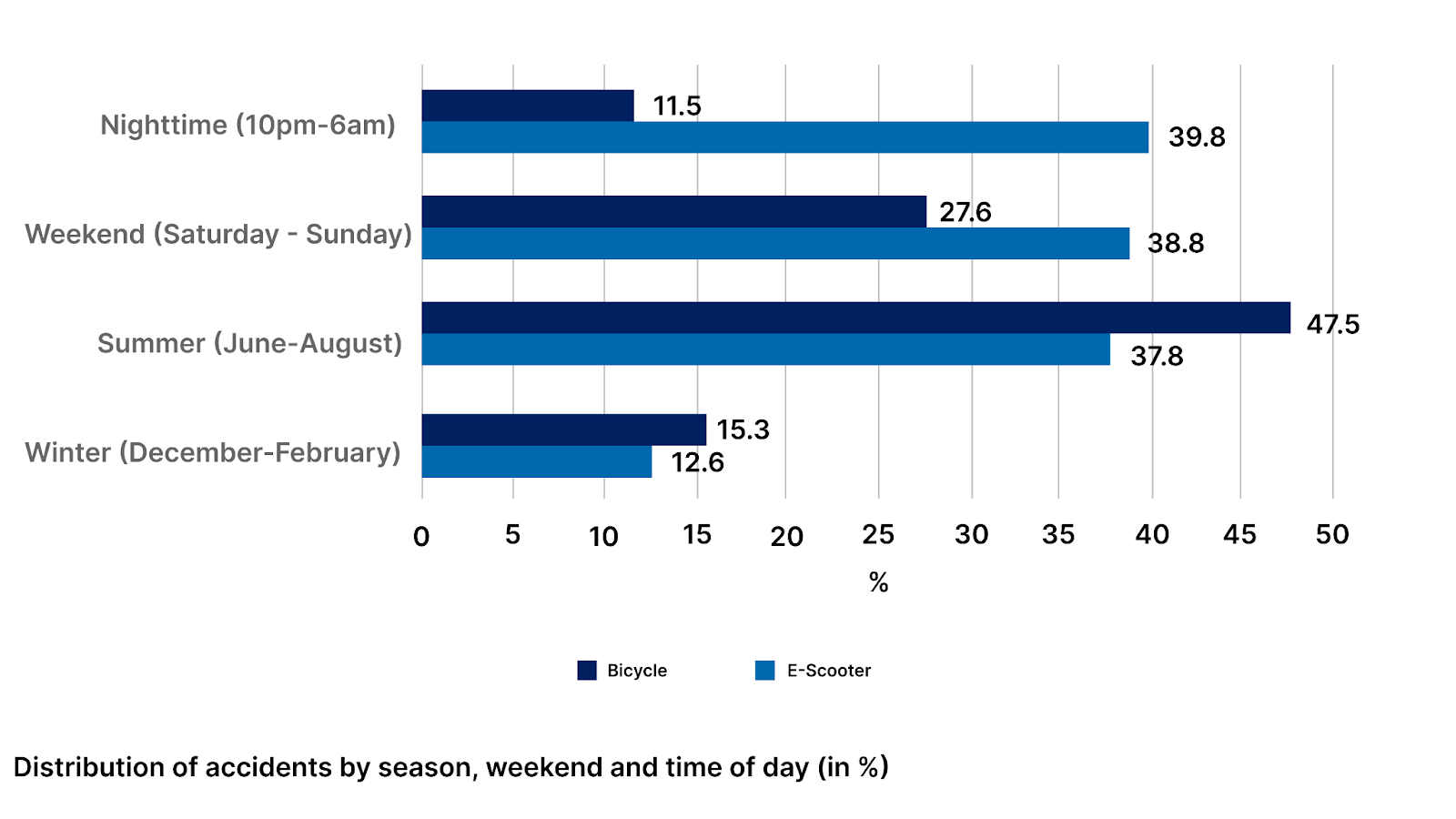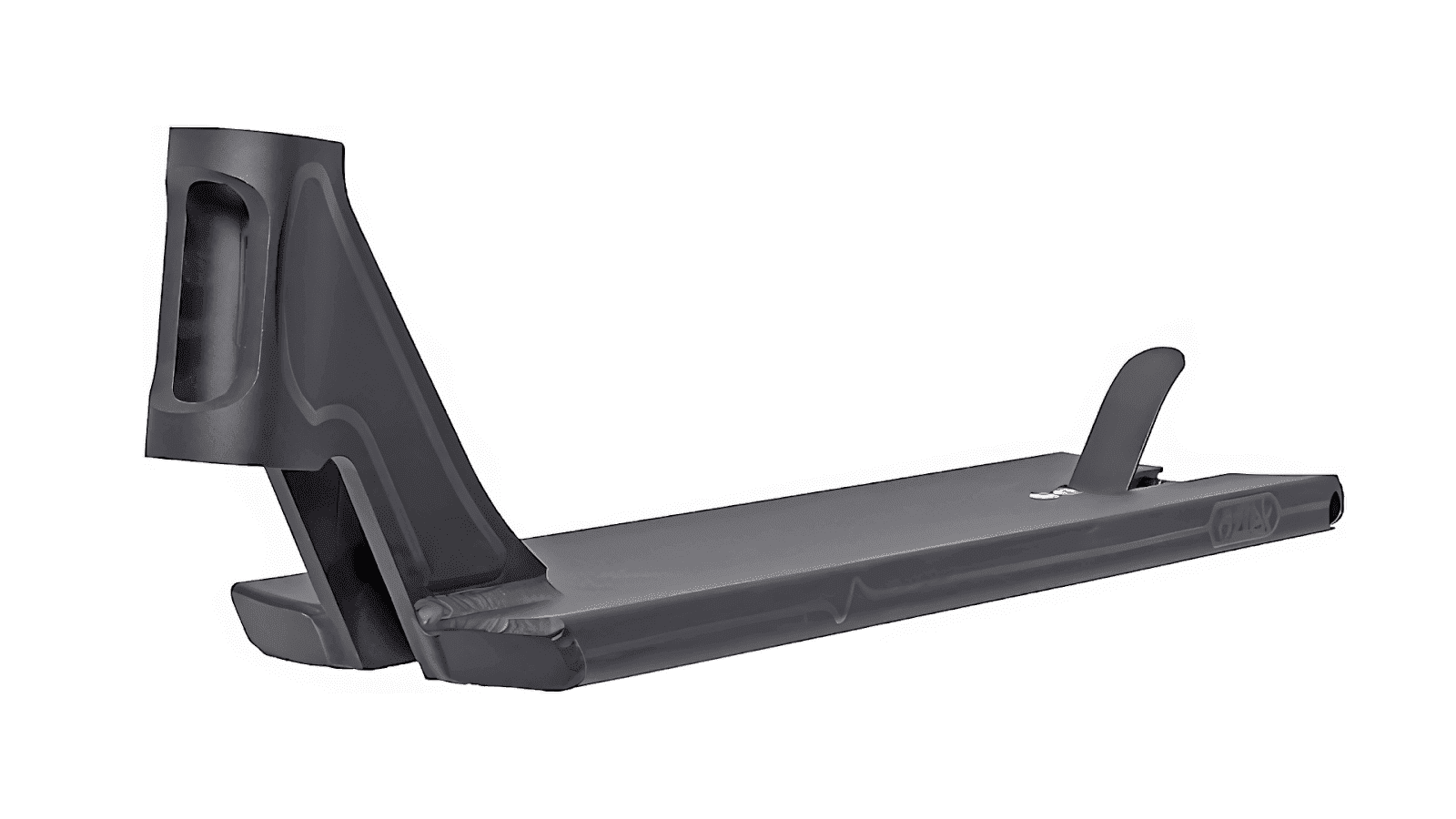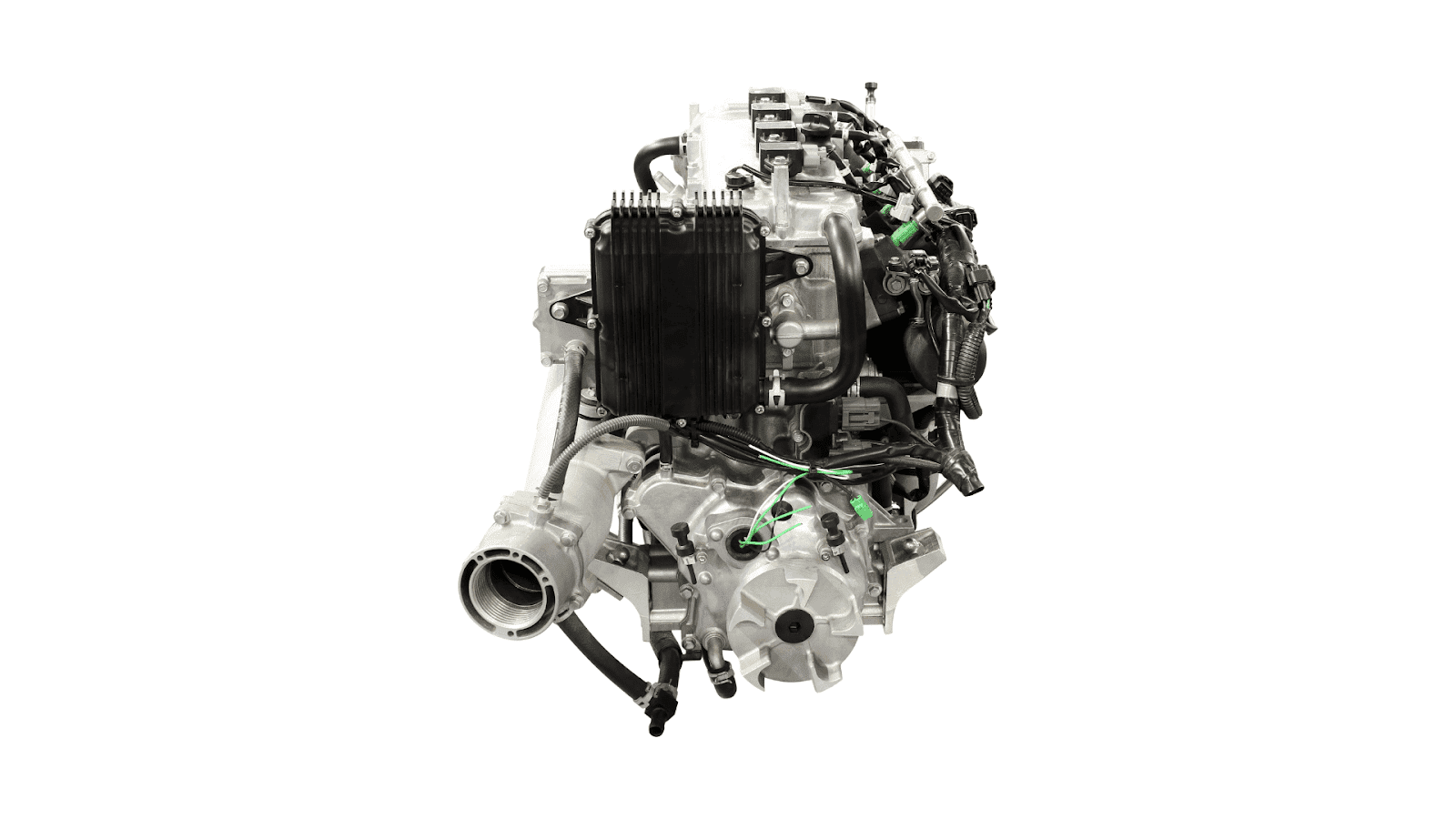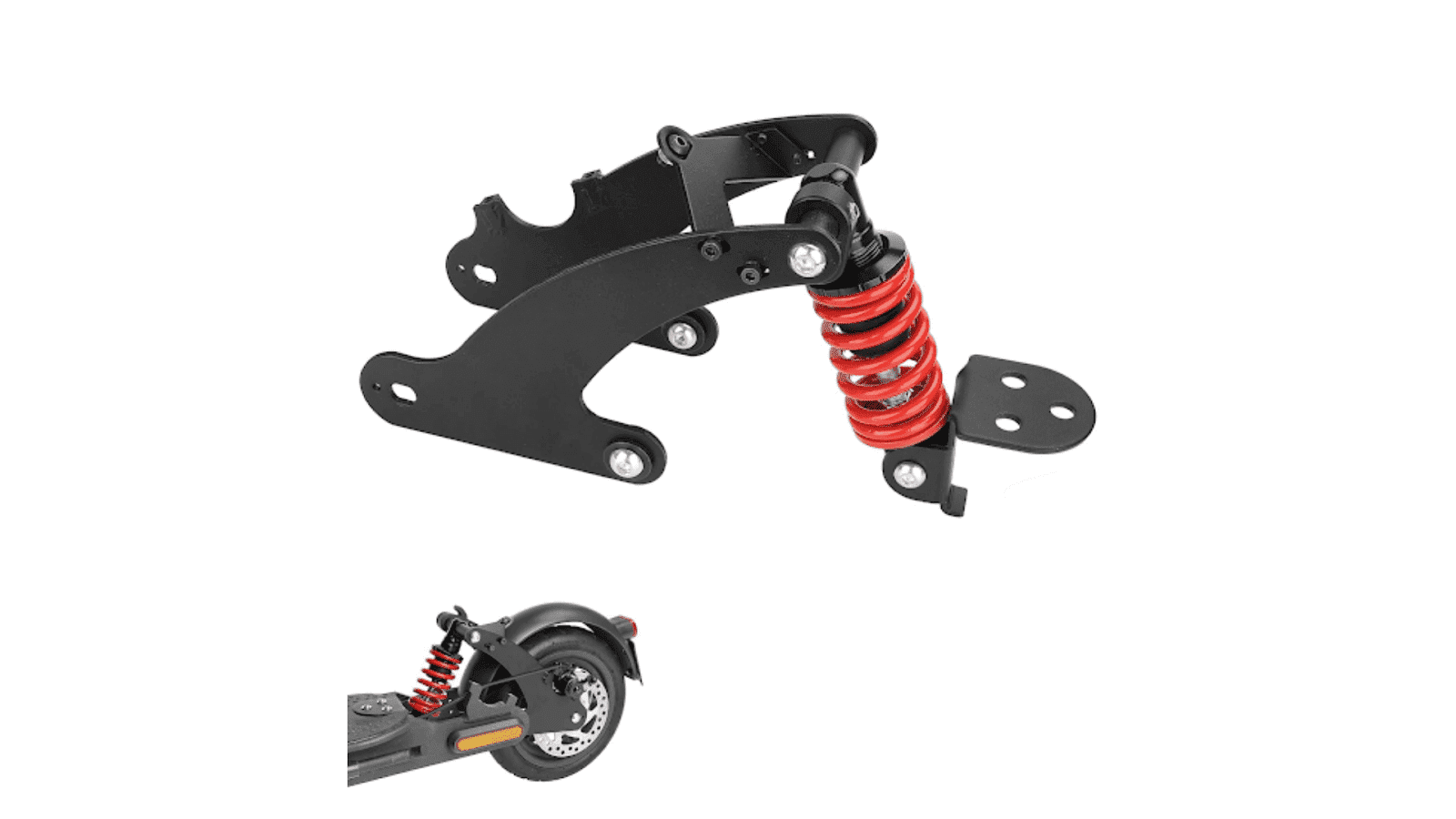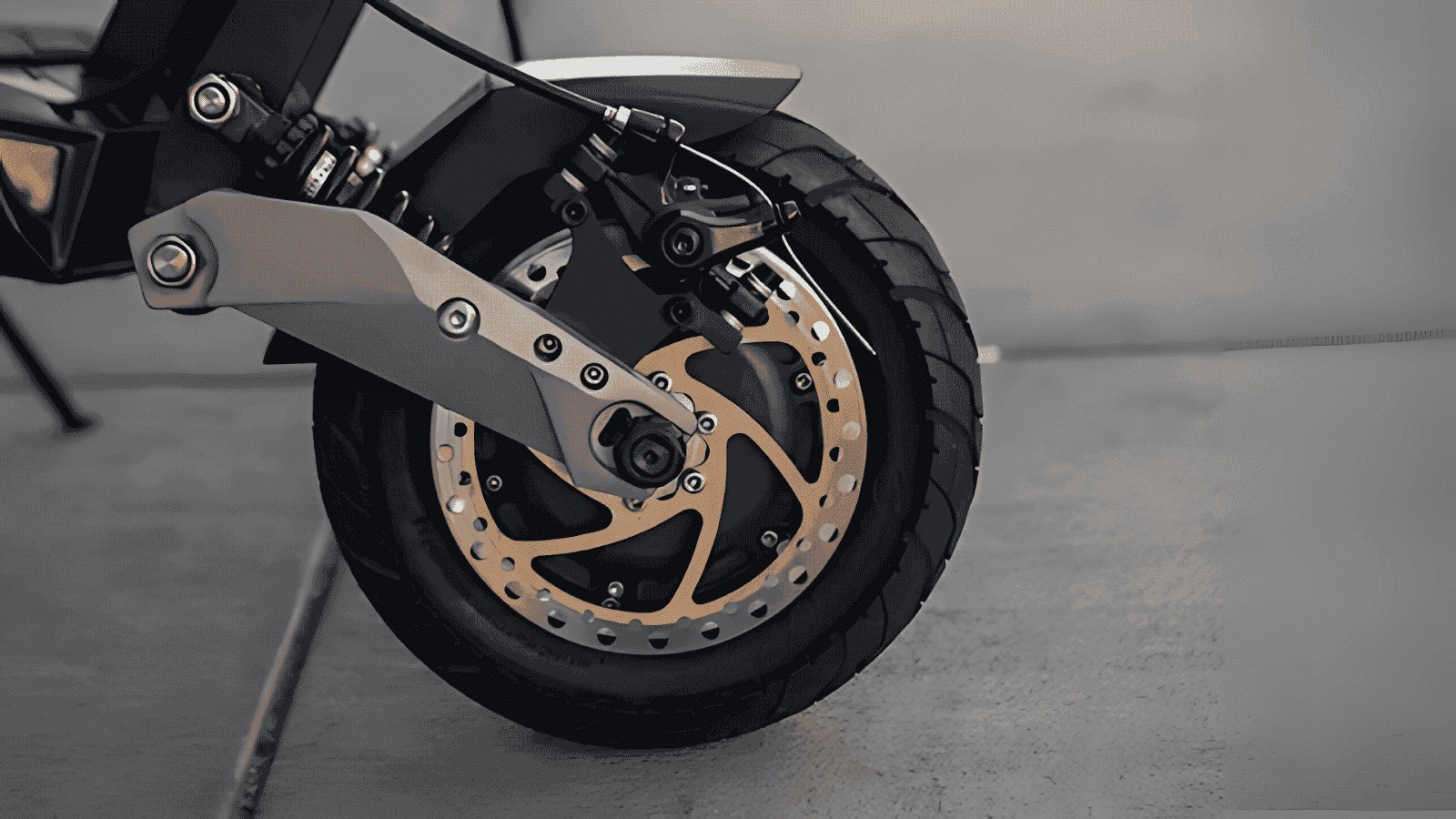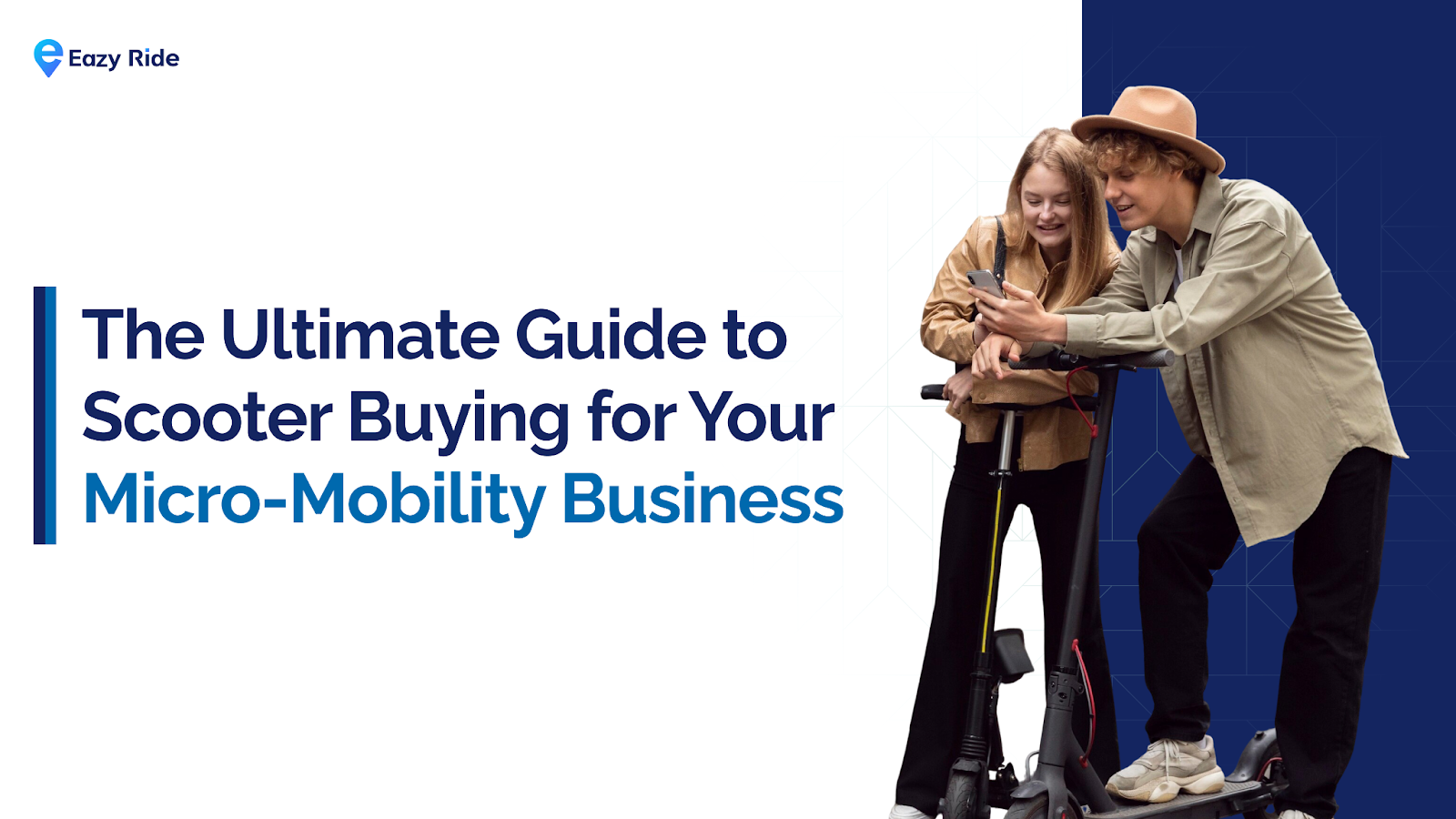 AllMicro Mobility Model
AllMicro Mobility Model
The Ultimate Guide to Scooter Buying for Your Micro-Mobility Business
Do you know the scooters you choose today could make or break your micro-mobility business?
When you’re starting or scaling a shared scooter fleet, choosing the right models isn’t just a matter of price. But many operators fall into the trap of buying scooters based solely on initial cost, only to find themselves with a fleet that’s hard to maintain, prone to breakdowns, or underperforming in key areas.
What’s more, with so many scooter models out there, how do you know which one will actually boost your business? Will it align with your riders’ needs or drain resources and increase downtime?
In this guide, we’ll break down the essential factors to consider when buying scooters for your fleet. We’ll cover everything from power and battery range to IP ratings and warranty to help you make an informed decision that ensures long-term success.
And as the global electric scooter and motorcycle market is projected to reach USD 197.1 billion by 2033, now is the perfect time to invest in scooters to help your business grow and thrive.
Let’s get started!
Know the Right Scooter Types for Your Micro-Mobility Business
Before buying scooters for your micro-mobility business, it’s crucial to understand the variety of options available. Choosing the right scooter will help you fit your budget, meet customer expectations, and build a successful fleet. With over 129 million electric scooters and motorcycles expected on the roads by 2028, knowing your options is key to staying competitive in this rapidly growing market.
Let’s explore the common types of scooters:
- Pro Scooters: These scooters are designed for tricks and stunts with durable, one-piece bars and metal-core wheels. They’re best suited for individual use and are not ideal for fleet rentals or daily commuting.
- Kids’ Scooters: Built with safety in mind, kids’ scooters often feature three wheels and adjustable handlebars. While they are perfect for family rentals, they’re typically not part of fleets intended for daily rentals or commuter services.
- Big-Wheel Scooters for Commuting: Big-wheel scooters are great for urban commuting, especially over rough terrain. They are often foldable with adjustable handlebars and larger wheels, making them perfect for daily rentals.
- Kick Scooters: Powered by foot-pushing, kick scooters are ideal for short-distance rentals. These budget-friendly, low-maintenance options are well-suited for casual rentals or tourist-friendly services.
- Motor Scooters: Motor scooters are best for longer-distance rentals or faster urban commuting. However, they require regular maintenance and licensing, making them more complex for shared use in fleet operations.
- Mobility Scooters: Designed for individuals with limited mobility, these scooters offer comfort and stability. While they provide specialized rental services, they are generally not part of the regular fleet intended for daily commuters.
Now that the scooter types are clear, let’s explore the price ranges and what you can expect from them.
Electric Scooter Pricing and Features Breakdown for Your Fleet
Electric scooters come in various price ranges, each built to meet different business needs and budgets. Knowing what features and quality to expect at each level helps you choose scooters that fit your fleet goals, rental patterns, and customer expectations.
Let’s take a closer look at what you get within different price brackets so you can make smart buying decisions for your micro-mobility business.
| Scooter Category | Features | Best For | Top Models |
| Elite Beast Scooters: Over $4,000 | – Motors ranging from 3000W up to 7000W
– Speed over 50 mph – Range up to 80 miles – Hydraulic brakes for enhanced safety |
Extreme performance, skilled riders, and specialty services | EMOVE Roadster Electric Scooter,
Teverun Fighter Supreme 7260R Electric Scooter |
| Extreme Performance Scooters: $2,500 to $4,000 | – Dual motors over 2000W
– Speeds over 40 mph – Range up to 40 miles – Tubeless pneumatic tires, hydraulic disc brakes |
High-demand shared mobility, urban transport with extreme reliability | Wolf King GTR,
Wolf King GT Pro |
| High-Performance Scooters: $2,000 to $2,500 | – Dual motors up to 2000W
– Speeds up to 40 mph – Range of 30-40 miles – Hydraulic or semi-hydraulic brakes, large pneumatic tires |
High-performance fleets prioritizing comfort and safety | Inmotion RS Midnight 2.0 Electric Scooter
RoadRunner RS5 MAX Electric Scooter |
| Premium Commuters: $1,500 to $2,000 | – Motor power 1000W-2000W
– Speeds near or above 30 mph – Range beyond 25 miles – Advanced suspension and braking systems |
Busy rental services, frequent use on varied terrains | Varla Eagle One 3.0,
VSETT 10+ Apex Electric Scooter |
| Midrange Commuters: $1,000 to $1,500 | – Motors up to 1000W
– Speeds over 25 mph – Range of 20+ miles – Standard suspension for comfort across city terrain |
Growing fleets, commuter services, and casual riders | CIRCOOTER Cruiser Pro,
Apollo Go |
| Budget-Friendly Commuters: $500 to $1,000 | – Motors between 300W-800W
– Speeds up to 20 mph – Range around 15 miles – Basic suspension and braking systems |
Urban areas, daily rentals for short to medium distances | GOTRAX GX Zero,
EMOVE Touring |
| Entry-Level Scooters: Under $500 | – Motors under 300W
– Speeds around 15 mph – Range of 8-10 miles – Basic mechanical brakes |
Casual rides, low-demand areas, short trips | VMAX VX5 Pro ST,
M10 Lite Commuting Electric Scooter |
Having covered all the price ranges, let’s focus on the key factors you must consider when choosing scooters for your micro-mobility business.
Also read: The Future of Micro-Mobility: Paving the Way for Sustainable Urban Transportation
What to Consider When Choosing Scooters for Your Business?
Choosing the right scooter for your fleet involves critical considerations of several factors that will impact your fleet’s performance, rider satisfaction, and long-term profitability. With the global e-scooter sharing market expected to grow from USD 925.50 million in 2023 to an impressive USD 5,730.45 million by 2033, it’s clear that making the right investment in your fleet today is crucial for staying competitive. Let’s explore the key elements that should guide your selection to ensure your fleet operates smoothly and efficiently.
Purpose
Choosing the right electric scooter starts with understanding its purpose. Your fleet’s intended use will guide your priorities—performance, durability, and cost-effectiveness.
Here’s what to keep in mind:
- Last-Mile Solutions: Choose lightweight, single-motor scooters with solid tires to deliver a smooth and reliable experience for your urban riders.
- Daily Commuting: Choose scooters with the power, range, and durability to handle longer distances and varied terrain.
- Tourism and Recreational Rentals: Select scooters with better suspension and comfort for longer, rugged rides suited to tourists or leisure riders.
Range and Battery Power
Range and battery power are critical factors for fleet performance and cost-efficiency. Here’s what to consider about range and battery power:
- Real-World Range: Manufacturer claims may overestimate range by up to 30%. Expect around 50% of the advertised range under normal conditions, so plan your fleet’s usage accordingly.
- Maximize Fleet Efficiency: Choose scooters with a range that exceeds your daily needs, ensuring your fleet can handle peak times without constant recharging.
- Battery Capacity (Wh): Larger batteries offer better range and performance. Opt for trusted brands like Panasonic or Samsung for reliable, long-lasting power.
- Battery Lifespan: Premium batteries last up to 1,000 cycles, reducing maintenance costs and improving fleet uptime.
Weight and Portability
Weight and portability directly impact both rider experience and fleet management. Beyond storage, it’s important to consider how scooters will be moved, rebalanced, or stored in daily operations.
Here’s what you need to consider:
- Scooter Weight vs. Range: Scooters with a range over 15 miles tend to weigh more than 25 lbs. Heavier scooters are harder to manage during rebalancing, repairs, and fleet redistribution.
- Manageability of Heavier Scooters: Scooters over 30 lbs can be cumbersome, even with handles or straps. These increase operational challenges, especially when transporting between service areas.
- Commuter Scooter Weight: Commuter scooters weighing between 22-26 lbs offer the best balance between range and portability, making them easier to handle during daily operations.
Top Speed and Safety
When selecting scooters for your fleet, speed is important, but safety should always come first. Safety goes hand in hand with speed. Over 80% of scooter injuries are caused by falls. Another study suggests that 39.8% of accidents occur at night (10 pm to 6 am).
Here’s what to consider when choosing scooters with safety in mind:
- Handling and Braking: Higher speeds demand better handling and quality brakes. Ensure the scooters you select provide stable rides and responsive braking.
- Avoid Unreliable Speed Claims: Be wary of scooters claiming unrealistically high speeds. These often sacrifice safety features, which can compromise your fleet’s integrity.
- Target Speed Range: For newer riders, 15-25 mph scooters provide a good balance between performance and safety while easing riders into a comfortable experience.
- Protective Gear: Regardless of speed, your fleet rental process should include safety gear (helmet, knee pads, elbow pads) to reduce injury risks.
Deck Size and Material
The deck size and material directly impact rider comfort and fleet efficiency. A well-designed deck ensures stability and enhances the overall riding experience, especially when managing a fleet of scooters for daily use.
Here’s what you need to know:
- Deck Size: The ideal deck size ranges from 18 to 22 inches in length and 6 to 8 inches in width. This size provides ample foot space for maneuverability and comfort during daily rides.
- Material: Choose durable materials like aircraft-grade aluminum. It offers a balance of strength, weight, and long-term durability, essential for fleet use.
- Grip and Traction: Decks should have high-quality grip tape or rubberized grooves to ensure rider safety and prevent slipping, even on wet surfaces.
- Portability vs. Comfort: Larger decks provide more space and comfort, ideal for beginners and riders with larger feet. Slimmer decks are more portable but may be less comfortable for longer rides.
- Design Considerations: Features like folding mechanisms or rear wheels can reduce deck space, so choose models that maximize usable space for rider comfort and operational efficiency.
Motor Power
Motor power is a crucial factor that influences scooter performance, including speed, acceleration, and hill-climbing ability. Most fleet operators choose scooters with brushless direct current (BLDC) hub motors, and motor power is typically measured in watts (W).
Here’s what you need to know:
- Budget Scooters: Scooters with motors up to 300W are best for flat terrain and light, low-demand use, offering a cost-effective option for less challenging routes.
- Commuter Scooters: Scooters ranging from 300W to 1000W are designed to handle moderate hills and daily rides, making them ideal for urban commutes.
- Mid-Range Scooters: With motors ranging from 500W to 1500W, often equipped with dual motors, these scooters provide better power for longer rides and more varied terrains.
- Performance Scooters: Scooters with motors of 1500W or more per motor offer high speeds and rapid acceleration and are ideal for demanding operations or performance-driven fleets.
Suspension
Suspension plays a critical role in ride comfort, especially for shared fleets operating on mixed or rough terrain. A well-designed suspension system reduces vibrations, protects components, and improves the overall rider experience, making your fleet more appealing to users.
There are three main types of suspensions commonly found on electric scooters:
| Suspension Type | Description | Typical Use |
| Spring Suspension | Uses coil springs to absorb bumps | Budget and lightweight scooters |
| Hydraulic/Air Piston | Oil or air-filled cylinders absorb shocks | Mid to high-end scooters |
| Rubber Suspension | Elastomer cartridges absorb vibration | Some premium scooters with adjustable ride quality |
What to consider as a fleet operator:
- Scooters with adjustable suspension offer flexibility across varying terrains and rider preferences.
- Fleet-grade scooters over $1000 usually include front or dual suspension for enhanced comfort.
- In low-suspension models, large pneumatic tires can offer a similar level of shock absorption and are often preferred for ease of maintenance.
Lighting
Proper lighting is essential for rider safety, especially during nighttime operations. While most scooters have a basic white front light and red rear light, advanced lighting options are becoming increasingly important for fleet safety and compliance.
Here’s what to consider when choosing lighting for your fleet:
- Standard Front and Rear Lights: White and red front lights are essential for visibility and night riding safety.
- Enhanced Visibility: Rear lights, often low-placed, may not be very visible. Add extra lights or reflective strips to the scooter for better rider visibility.
Brakes
Reliable brakes are crucial for rider safety and fleet control. Scooters typically use two types of brakes: mechanical and electronic.
- Mechanical brakes physically slow down the scooter, including the foot, drum, and disc brakes.
- Electronic brakes use the motor to reduce speed, including regenerative braking, but they are less effective at stopping quickly alone.
Here’s a quick comparison of the main brake types:
| Brake Type | Stopping Power | Maintenance | Best Use |
| Foot Brake | Moderate | Low | Casual riding |
| Drum Brake | Good, consistent wet | Low | All-weather, everyday use |
| Disc Brake | Best, most powerful | Moderate | High-performance, heavy use |
| Electronic | Weakest, supplemental | None | Added safety with mechanical |
Key Points to Consider:
- Reliable Stopping Power: Mechanical brakes provide consistent, strong braking, which is crucial for high-traffic routes where quick stops are frequent.
- Low Maintenance: Drum brakes offer durability and low upkeep, making them ideal for fleets in areas with varying weather conditions.
- Fast Stopping: Disc brakes provide the shortest stopping distance (under 10 feet at 15 mph), perfect for high-performance fleets or urban environments with frequent stops.
- Supplementary Braking: Electronic brakes assist with energy recovery but should always be paired with mechanical brakes for adequate stopping power.
Combining mechanical and electronic brakes ensures reliable, efficient fleet operations, especially for longer rides or varied terrains.
Return on Investment (ROI) Considerations
When choosing or buying scooters for your fleet, it’s crucial to consider the Return on Investment (ROI) to ensure long-term business success. A scooter’s cost should align with its performance, lifespan, and overall contribution to your business. Understanding how to maximize ROI helps you make smarter purchasing decisions that drive profitability.
Here’s what to consider:
- Upfront Costs vs. Long-Term Savings: While budget scooters may seem appealing, investing in higher-quality models can save you money in the long run by extending the scooters’ lifespan.
- Performance Efficiency: Higher-performing scooters with better battery life and durability often lead to fewer breakdowns and better customer satisfaction, which translates into higher revenue generation.
- Maintenance Costs: Consider the maintenance costs. Opt for scooters that require fewer repairs to minimize unexpected expenses.
- Utilization Rates: Choose scooters that meet the demands of your riders, ensuring high usage rates. Scooters that are better suited for daily commuting or tourist rentals tend to generate more revenue per ride, boosting your ROI.
Tires
Choosing the right tires impacts ride quality, comfort, and fleet performance. Whether on smooth city streets or rougher terrain, the right tire type and size ensure your fleet runs smoothly.
Here’s a quick comparison of tire types:
| Tire Type | Pros | Cons | Best For |
| Solid (Airless) | Maintenance-free, no flats | Poor ride comfort, less traction | Short commutes on smooth roads |
| Pneumatic (Air-filled) | Better shock absorption, more grip | Requires maintenance, prone to punctures | Longer rides, rougher terrain |
Key Points to Consider:
- Hybrid Setup: Fleets often prefer a hybrid setup, which combines air-filled front tires for comfort and solid rear tires for durability, balancing ride quality and maintenance.
- Tire Size: Entry-level scooters typically have 8.5-inch tires, balancing portability and stability. Larger tires (10+ inches) provide better handling and off-road capability but reduce portability.
- Tire Type and Terrain: Solid tires are better for smooth urban streets, while pneumatic tires excel on rough terrain and offer a smoother ride.
IP Ratings
IP ratings determine how well a scooter can withstand dust and water. The first digit refers to dust protection, while the second indicates water resistance. Higher numbers represent better protection, which is essential for fleet durability.
Here’s what to consider:
- Minimum Rating: Opt for scooters with at least an IPx4 rating for basic water resistance, ensuring they can handle light rain and urban conditions.
- Unrated Scooters: Some scooters may not have an official IP rating but still offer adequate protection. Consider their build quality and use case before dismissing them.
- Evaluate Overall Needs: If a scooter meets your operational needs and performs well, don’t overlook it just because it lacks an official IP rating.
Warranty
When purchasing scooters for your fleet, warranty and cost are essential factors to ensure long-term reliability and value.
- Warranty: Most electric scooters offer a 6-month to 2-year warranty. Focus on brands that cover key components like batteries and controllers, and prioritize those offering strong customer support and easy access to replacement parts.
- Maintenance & Repairs: Regular maintenance is necessary, especially for tires, brakes, and bolts. Choose durable materials like aluminum alloy to reduce repair needs. Be prepared to handle basic maintenance, as professional repair services may be limited.
So, now we understand how to select the best scooter for your fleet, the next part is where to get your dream fleet vehicles. Let’s explore.
Also read: Secrets to Launching a Successful Micro-Mobility Startup
Where to Buy an Electric Scooter?
Selecting the right place to purchase your electric scooters is just as crucial as picking the right model.
Here are your main options:
- Brick-and-Mortar Stores: You can physically test and inspect scooters, ensuring quality, but expect higher prices and limited selection, which might not suit larger fleet purchases.
- Online Retailers: Convenient with a broad selection and competitive pricing. However, post-purchase support can be inconsistent, so verify the retailer’s return policy and warranty services.
- Specialty Distributors: These suppliers specialize in specific brands, providing expert customer support, technical assistance, and often repair services, which are essential for fleet maintenance.
- Direct from Manufacturers: Purchasing directly from manufacturers ensures the best warranties and customer support, which is ideal for businesses scaling their fleet.
- Crowdfunded Campaigns: While potentially cost-effective, these are risky for fleet operators due to delivery delays and uncertainties. They are better suited for smaller, niche purchases than large-scale fleet needs.
Now that you’ve got your scooters, let’s discover how to boost your fleet operations and revenue.
Manage and Scale Your Micro-Mobility Fleet with Eazy Ride
When it comes to running a successful micro-mobility business, efficiency, real-time control, and seamless service are essential. Eazy Ride provides all that and more. It’s an all-in-one solution designed to help you manage your fleet effortlessly, optimize your operations, and ensure a smooth experience for both you and your customers.
Here are some of the key features that make Eazy Ride the ideal solution:
- Admin Panel: Your control center to manage vehicles, riders, fares, and operations in real-time.
- Offline Mode: Thanks to Bluetooth integration, you can enjoy a seamless connection even without internet access.
- In-App Wallet: Simplify payments with a secure in-app wallet for your customers.
- Ride Dispute System: A ticketing system for managing ride disputes, enhancing transparency, and customer satisfaction.
- White-Label App: Customize the booking experience with your branding, giving your customers a seamless, hassle-free experience.
- Geofence Management: Define operational zones like parking or no-ride areas to maintain control and ensure regulatory compliance.
- Real-Time Vehicle Monitoring: You can monitor vehicle locations, performance, and health at your fingertips, ensuring efficient fleet operations.
- Data Security and Privacy: Prioritize your fleet’s and customer data’s security with top-notch encryption and privacy standards.
With Eazy Ride, you gain access to a powerful platform that allows you to focus on scaling your business while completely controlling your fleet.
Conclusion
Choosing the right scooter for your fleet is about balancing budget, features, and operational needs. The right scooters can elevate your service, ensuring reliable performance and a great customer experience. Whether you’re looking for simple, cost-effective models or higher-performance scooters, understanding key features will help you make an informed decision for your business.
To maximize your scooter operations, Eazy Ride is the solution you need. Our platform streamlines fleet management with features like real-time tracking, dynamic pricing, easy booking, and compliance tools. Eazy Ride is here to help your scooter business grow, operate smoothly, and effectively meet your customer demands.
Request a demo today to learn more.
Frequently Asked Questions
1. What factors should I consider when choosing scooters for my fleet?
Consider purpose, range, battery power, weight, portability, and safety features to ensure the scooters align with your business needs and customer expectations.
2. How can I ensure my fleet’s scooters last longer?
Focus on battery maintenance, regular checks on brakes and tires, and choosing high-quality models to reduce wear and tear and extend the lifespan of your scooters.
3. Should I choose solid or pneumatic tires for my scooter fleet?
Pneumatic tires are better for comfort and rough terrain, while solid tires are low maintenance and great for smooth urban streets. Choose based on your fleet’s operating environment.
4. What speed should I look for in scooters for commuter use?
Scooters with a top speed of 15-25 mph are ideal for commuter fleets. They balance performance and safety, aligning with city regulations and rider needs.
5. How important is scooter warranty and after-sales support?
A strong warranty (6 months to 2 years) and accessible customer support are essential for fleet operations. Ensure the brand offers coverage for key components like batteries and controllers.


